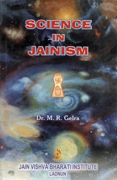
For an ordinary person, this subtle distinction between suicide and Santhara is beyond his comprehension and significance. He is mortally afraid of the voluntary death and considers it dreadful and repugnant to all ethics. Even those religions that do not advocate the liberation of soul have misunderstood the concept of Santhara and objected to it on the grounds that Santhara is against the fundamental principle of ahimsa. Mrs. Sinclair in her book (Heart of Jainism pp 163-65) has remarked "It is strange that a religious system which begins with the most minute regulations against the taking of the life of the lowest insect should end by encouraging human suicide". We find similar comments in the Encyclopaedia of Religion and Ethics by Hastings, p.347.
It is, therefore, interesting to study santhara in its philosophical aspects and in the light of the concept of ahimsa with inscriptional and Agamic evidences in its support.
The entire ethical code of Jainism is directed towards the attainment of complete liberation of soul from the karmas (pudgala) through introspection and penance (tapa) so that the cycle of rebirth comes to an end or at least gets minimised. In actual practice, the methods of penance are more popular for self-purification than those of meditation in the Jain Community.
Even in the modern times there are examples of this kind of self-undertaken tapas where the Jains have resolved to live without food and nourishment for a continuous period of more than two hundred days. Dr. Hermann Jacobi who has correctly assessed this aspect of the Jain's cult has stated: "Among austerities, fasting is the most conspicuous. The Jains have developed it to a kind of art and reached a remarkable proficiency in it."
The basic concept underlying the vow of Santhara is that a man who is the master of his own destiny should resolve himself to follow the best method of leaving the body. A Jain resolving to undergo Santhara knows it well that he has eaten a lot of food to sustain his body during this life. Now, when the body does not cooperate to help in living meaningfully any more, the person should resolve for Santhara. During Santhara one must not wish to live on or desire sensual pleasures but equally he must not seek for death to come swiftly.
A certain section of Jain masses believe to the extent that the present life will be meaningful only if a person observed Santhara at the end of one's life. It is done with the belief that the departed soul may find a place in heaven after death. There are so many evidences in agamsutras regarding this belief. Therefore, the person who observes santhara gets respect from the society. The occasion is celebrated in a festive mood and manner by the Jains.
It is true that the Jains preach Ahimsa by saying, 'All jivas want to live and hence one should not kill any living creature'. But thinking deeply Ahimsa is basically meant for one's own liberation. If one resolves not to kill or harm any living creature, then one's own anger, pride, greed and attachment will automatically subside and he shall become free from worldly sins. Santhara is basically conceived and practised on the principles of Ahimsa, as one does not desire for death and does not harm consciously even the sukshma jivas (very tiny living creatures) of the earth, water and fire. There are no psychological or sociological implication involved in it as one takes the oath voluntarily and willingly and does not harm oneself or any other member of the society at large.
It has been clearly emphasized that Santhara should not be undertaken without the permission of the guru (religious preceptor). The guru does not allow a person to undertake Santhara who suffers from some mental abnormalities and lacks the instinct of self-preservation. The guru also does not allow Santhara in such cases where one wants to relieve the members of his family from financial or worldly liabilities due to miserable poverty. The grant of permission of the guru eliminates the cases of 'bala marana' i.e. suicide.
It is remarkable to note that if the vow of Santhara is taken with the ulterior motives or with a desire for material gains (niyana) in the next life, then it is regarded as sinful and considered as suicide. In undertaking Santhara, the intentions are mainly spiritual-cum-situational and the sole aim of the action is the purity of soul. Hence Santhara is in no way against the basic principles of Ahimsa.
There is a method described in the old scriptures for taking the vow of Santhara. First of all adoration should be done to Arhat and then adoration to siddha, and then it is incumbent to bow one's head in the name of all religious acharyas and finally to resolve to undertake fast unto death. The Acaranga Sutra has explained three forms of Santhara:
- Bhaktapratyakhyana marana
- Ingita marana
- Padapopagamarana
 Dr. Mahavir Raj Gelra
Dr. Mahavir Raj Gelra

